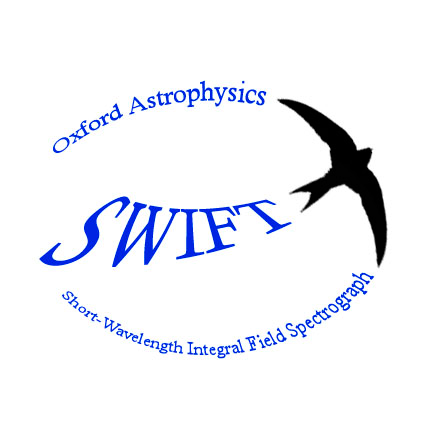|
|
Recent Results with P3K
Since its re-commissioning with P3K, SWIFT has been able to observe several solar system objects, combining excellent spatial resolution with moderate spectral resolution. The scientific analysis of these data is still on-going, but the reconstructed images offer a first glimpse of the capabilities of SWIFT, in conjunction with PALM 3000.
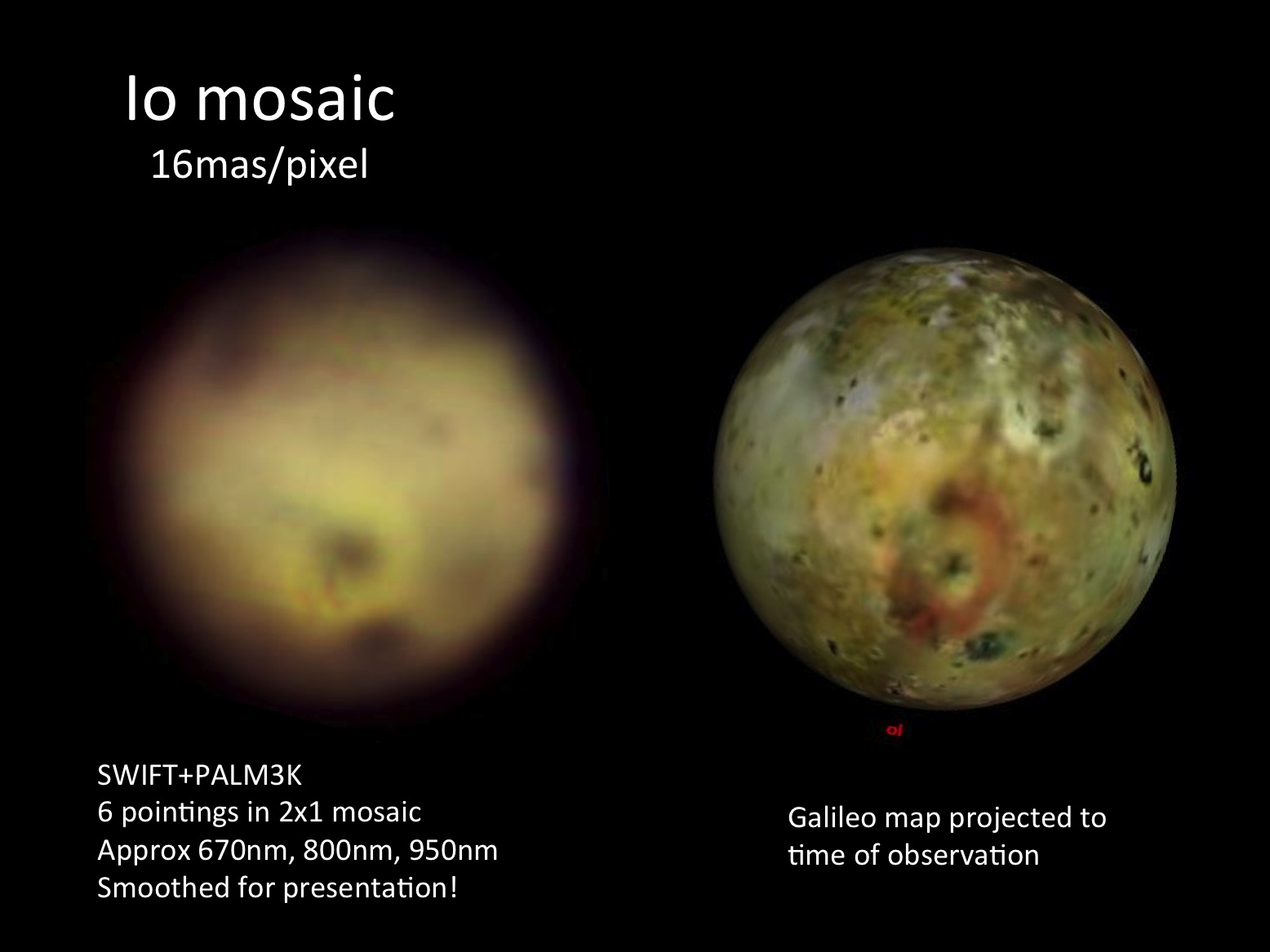
This spectacular high resolution image of the Jovian moon Io (left, Galileo space probe image for comparison on the right) is a false colour composite made by combining sets of channels from the SWIFT data cube, observed at the 16 mas spaxel scale. The FoV at this diffraction limited scale is too small to observe Io in a single exposure, requiring a mosaic (picture courtesy Fraser Clarke).
The left hand picture shows a reconstructed image from the SWIFT data cube for the Jovian moon Ganymede, observed with the 0.080″ spaxel scale in 2012. The right hand figure shows a comparison high resolution image taken with the Galileo space probe, aligned to the same orientation as the SWIFT observations. The Galileo Regio (at 140 degrees longitude) is clearly visible in the SWIFT image to the upper right. The albedo contrasts vary signiificantly with wavelength, as can be seen in lower resolution data from SWIFT (below), taken in poor seeing conditions in 2011.
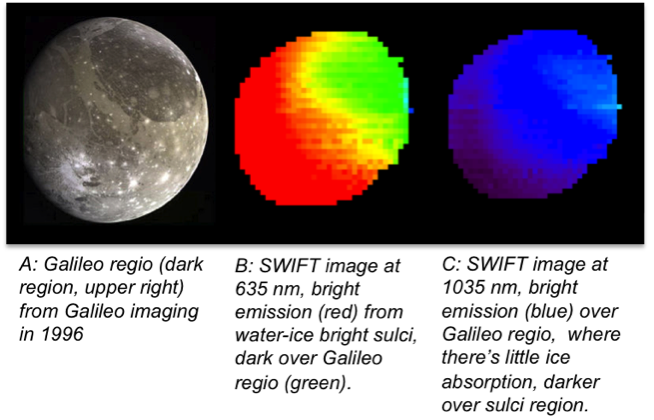
SWIFT First Results
Although the first semsester (2008B) of SWIFT Commissioning and Science Observing was mostly weathered out, we were able to get a couple of observations that demonstrate SWIFT's capabilities.
- The Eskimo Nebula (data reduction by Fraser Clarke)
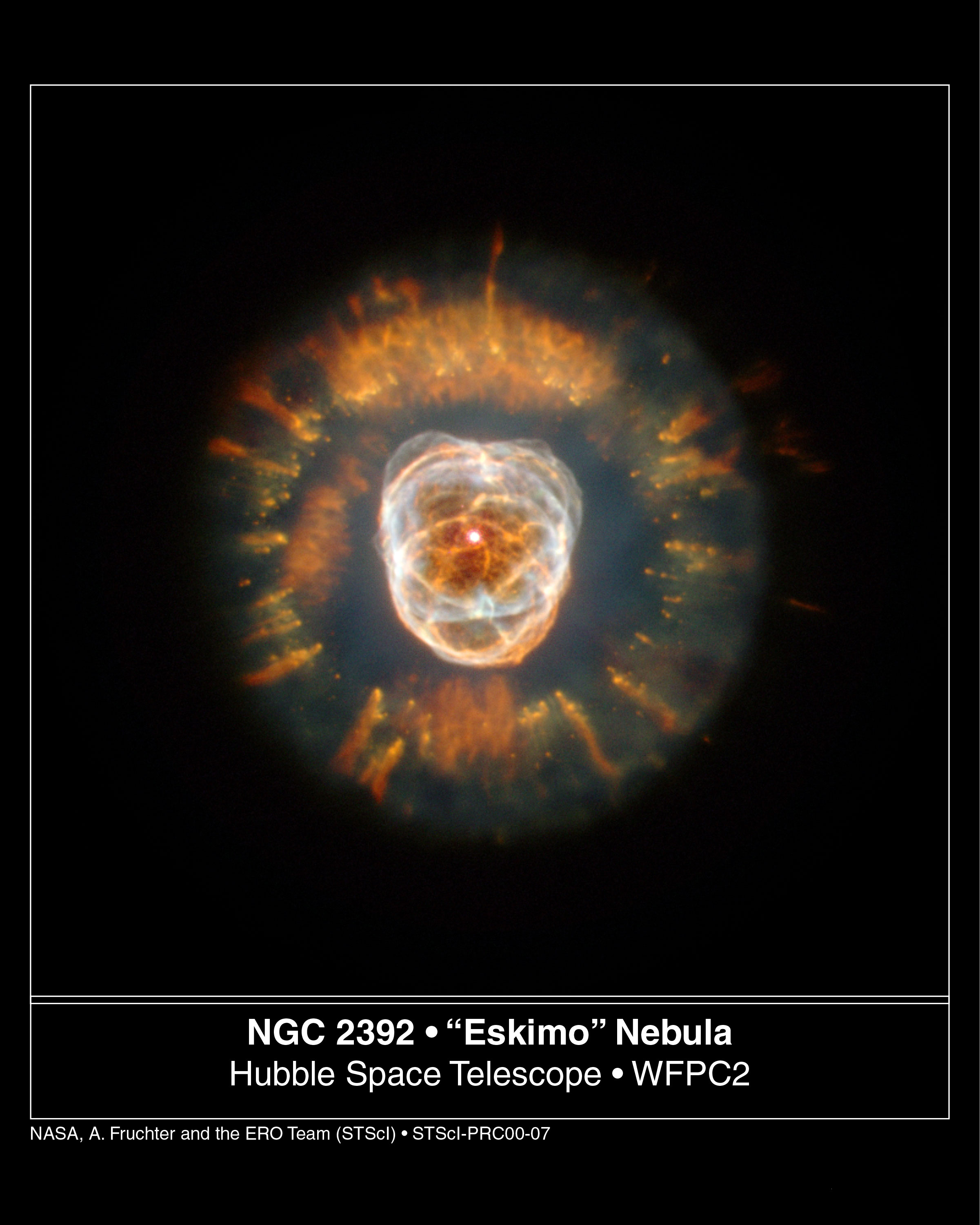 |
This Hubble Telescope Picture of the Eskimo Nebula is taken from http://apod.nasa.gov/apod/ap031207.html. SWIFT data were taken in December 2008, multiple pointings were required to cover the entire nebula. The frame below shows channel maps stepping through the Sulphur-III emission line at 9072 Angstroms. The step size is 1 Angstrom. The top left is the lowest wavelength, with the longest wavelength on the bottom right. The dynamics of the nebula show up well. The top to the nebula is blue shifted (coming towards us), while the bottom is red-shifted. So, the nebula is not a nice sphere one might expect, but an elongated bubble tilted at ˜30 degrees to our line of sight (this was already known before this amazing SWIFT data though! You can also see some of the filamentary structure of the emission which is very evident in the HST image (the HST image is built up using different emission lines from this, so it's not clear the features will correlate). All of this is better seen in the SWIFT movie, that steps through the channel maps. |
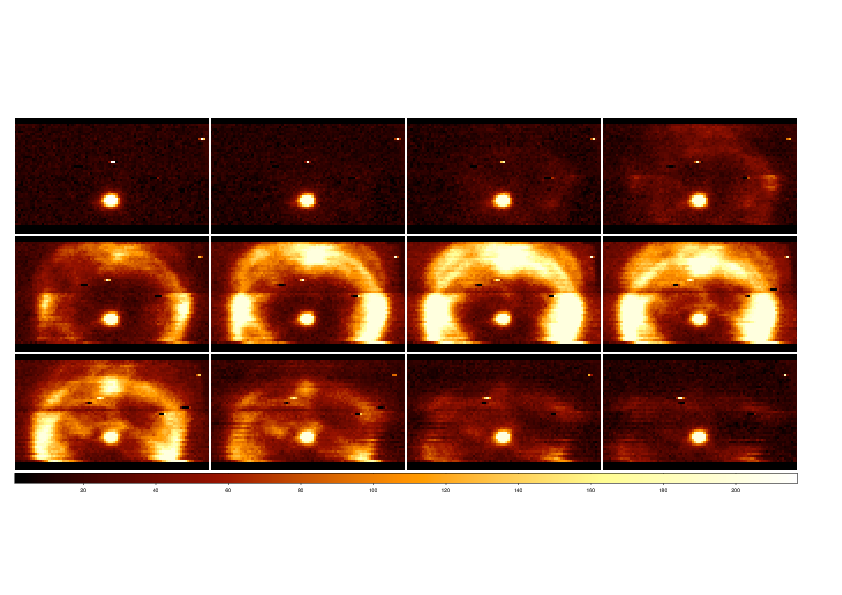
- Arp 147 (data reduction by Lisa Fogarty)
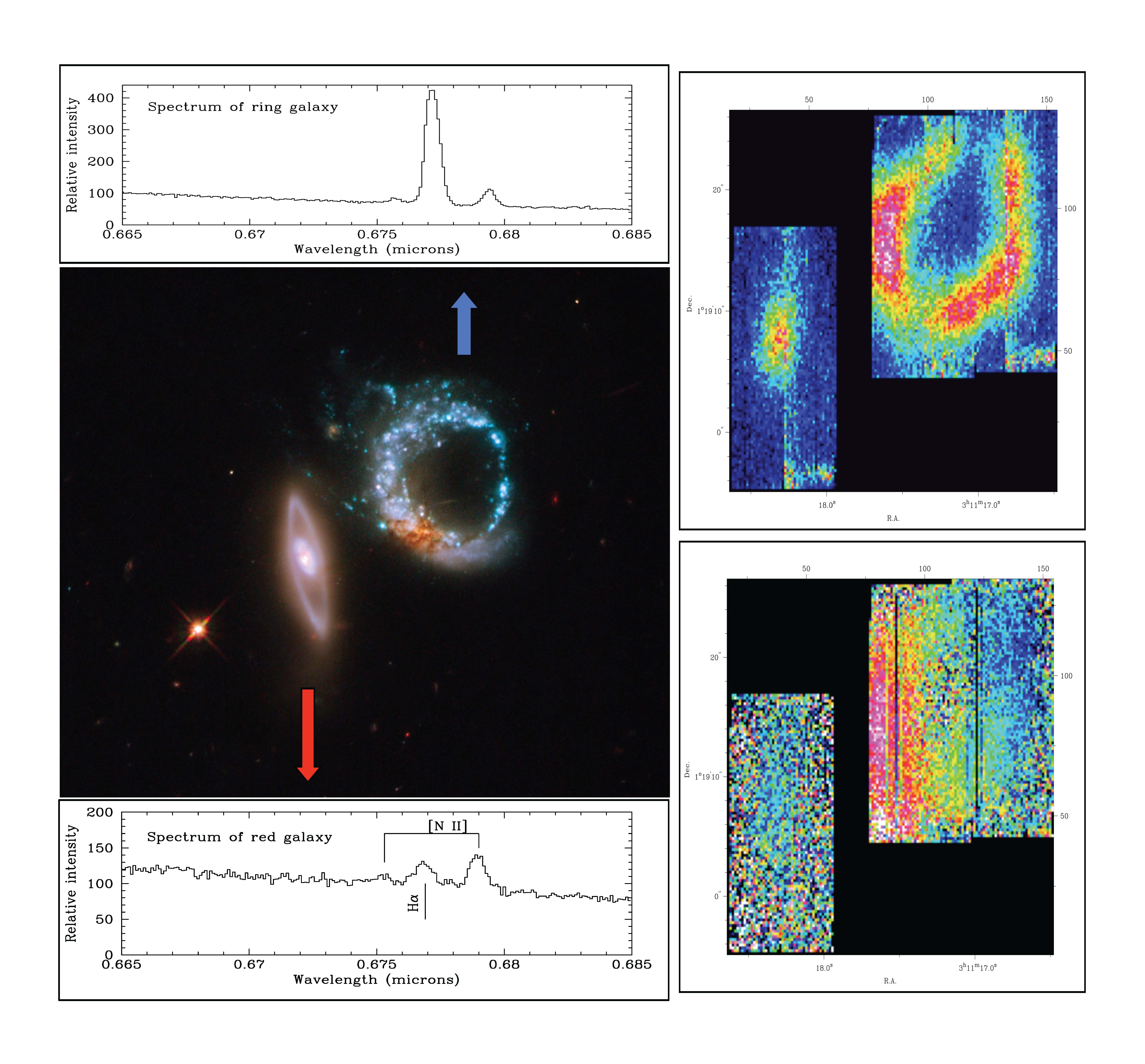
The Arp 147 system is a pair of strongly interacting galaxies that appear to have recently undergone an encounter. The colour image is an HST composite, more details of which can be found here. The press release is titled "Hubble scores a perfect 10!". SWIFT data was taken in January 2009, with two pointings covering the ring galaxy (the 0 of the 10), and an additional pointing covering the early type galaxy (the 1). The collision appears to have been almost head-on, leading to the formation of the ring galaxy, similar to the Cartwheel galaxy, and as predicted by simulations by Chris Mihos and collaborators (some nice movies on the web page!). However, unlike the Cartwheel galaxy, the ring in Arp 147 is empty (there are no spokes to the wheel), which points to a slightly off-centre collision (similar to the interacting system NGC7714/5, more details of which can be found here (look for the section on ring galaxies).
The SWIFT data clearly show that the ring galaxy is undergoing vigorous star formation, as can be seen from the strong Hα line, relative to the [NII] emission, and in strong contrast to the early type galaxy. The SWIFT velocity field shows clear evidence for expansion of the ring galaxy, as can be seen from the first moment map (velocity field, lower right). The SWIFT integrated emission is seen on the upper right. All these features, the Hα/[NII] ratio, the strong contrast between the two galaxies in star formation rate, and the expansion of the ring galaxy, are all better appreciated in the movie (warning 13 MB!). The movie steps through the wavelength channels spanning the Hα and [NII] emission, with a step size of 1 Angstrom.
These results have been published in Fogarty et al., 2011, MNRAS, 417, 835.
|

